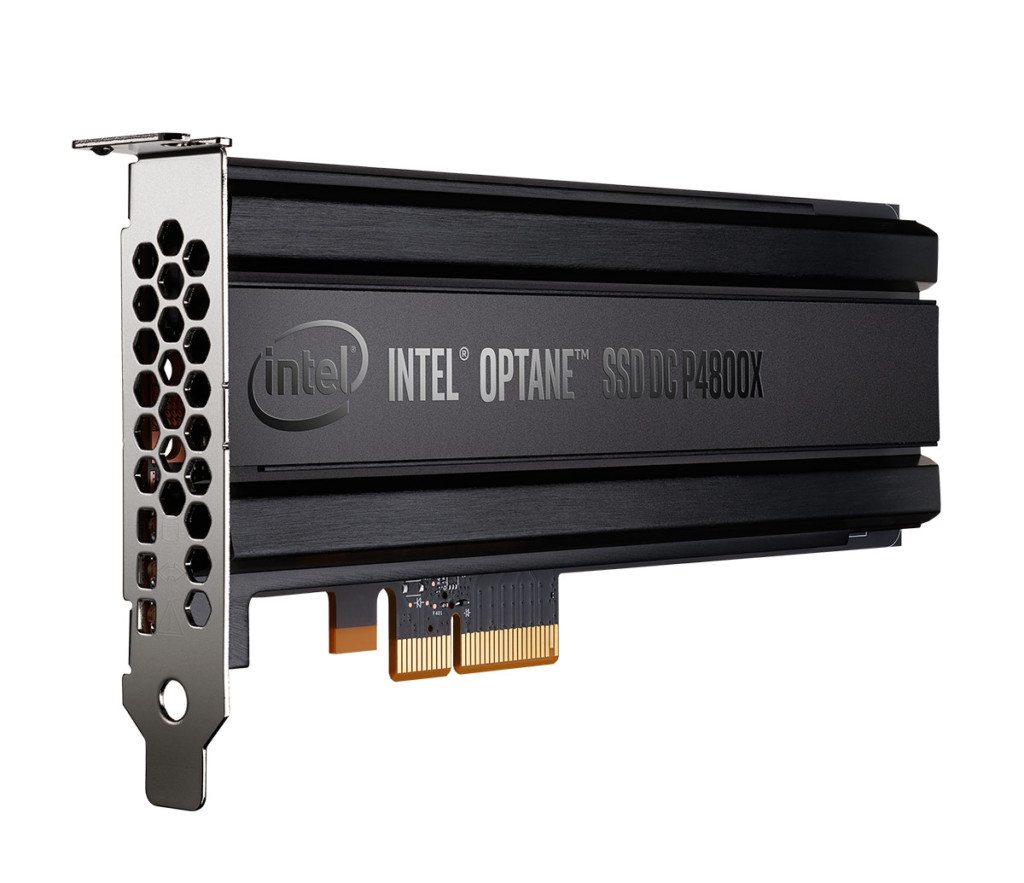Intel’s introduction of its new Optane SSD DC P4800X Series offerings is both interesting and a bit controversial. Interesting because of the potential value the new SSD solutions offer to data center operators and across a range of business applications.
Controversial because of the somewhat circuitous road that Intel and partner Micron traversed since July 2015. That was when the pair announced plans to leverage 3D XPoint (pronounced: three dee cross point), a non-volatile memory (NVM) technology that would result solutions that were “1,000X faster than flash with up to 1,000X flash’s endurance and 10X denser than conventional memory.”
Like many or even most new technologies, the new Optane SSD DC P4800X offerings don’t quite reach the heights initially hoped for but at the same time they deliver significant benefits that should attract enterprise customers and help to achieve Intel’s larger goal; to fundamentally transform storage and memory architectures.
Let’s look at that more closely.
The problems and promise of memory
It isn’t too much of a stretch to say that memory technologies have essentially transformed IT markets. That’s due to two separate issues; 1) decreases in the price of conventional DRAM (volatile memory) that make it more financially feasible to use it to speed applications and workloads, including in-memory databases, and 2) the performance boost that non-mechanical NAND Flash-based solid state drives (SSDs) deliver to traditional data storage operations and processes.
But those substantial benefits are also offset with significant challenges. Even though DRAM is cheaper today than ever before, it still costs significantly more than NAND and its volatile characteristics (where a loss of power causes data to be lost) makes it less than perfect for critical business applications. In the case of NAND, its low price is offset by latency, endurance and density issues. Add in the crowded NAND marketplace and how difficult it is for vendors to be profitably competitive, and you can see why alternatives would be attractive.
But what could a vendor achieve with a unique new technology that addressed the shortcomings of NAND and allowed it to enhance both memory and storage applications? That’s essentially what Intel and Micro proposed with 3D XPoint, and what Intel says it has delivered in its new Optane SSD DC P4800X.
Optane SSD DC P4800X out of the box
So what does Intel’s new solution offer? According to the company, Optane delivers “an industry-leading combination of high throughput, low latency, high quality of service and high endurance” that allows the new solutions to be “deployed as blazing fast storage or caching tier.”
How do these capabilities look in real world terms? It’s a bit tricky to sort his out since Intel compared the new 375GB Optane DC P4800X against its own DC P3700 drives whose capacity point begin at 400GB. Even so, the performance numbers Intel shared were notable and even startling.
In low queue depth, where most applications generate their storage workloads Optane SSDs performed 5-8X better than DC P3700 drives. But Intel noted that Optane’s random read IOPS performance was nearer 10X more than what DC P3700 could support, and is about 4X the performance offered by NVMe drives from Samsung and Seagate.
That puts Optane a significant long step ahead in performance terms but the new solutions also deliver significantly better endurance than competitors’ offerings. How much better? According to Intel, the DC P4800X can support as many as 30 drive writes per day (DWPD) compared to the 0.5 to 10 DWPD offered by other NAND SSDs. The company also noted that this enabled the DC P4800X to have up to 2.8x more total bytes written to it over five years than a DC P3700 SSD which supports 17 DWPD.
In other words, the DC P4800X appears to fulfill Intel’s claims about its value as a notably fast storage solution but how about its applicability in caching scenarios? That’s where Intel’s new Memory Drive Technology comes in which the company said “transparently integrates the drive into the memory subsystem and presents the SSD as DRAM to the OS and applications.” As a result, organizations will be able to use Optane to create large, cost effective “pools” of shared memory to enhance application and workload performance.
Intel also noted that no changes to the OS are required by Optane but that the new SSDs are (not surprisingly) only supported by Intel Xeon processors. The solutions are available now to customers in an early ship program. MSRP for solutions is: Intel Optane SSD DC P4800X, 375 GB AIC: $1520, and Intel Optane SSD DC P4800X with Intel Memory Drive Technology: $1951 Additional capacities and form factors will be available in the second half of 2017.
Final analysis
So what’s the key takeaway here? In short, with the new Optane SSD DC P4800X solutions Intel appears to have achieved its goal of creating a robust new technology that combines the attributes of both memory and storage. The technical details the company shared, along with the comparisons with its own well-established DC3700 SSDs suggest that Optane offers notable advantages in price/performance that will attract enterprise buyers.
That should result in Intel’s solutions being deployed in a variety of fast storage and cost effective pooled memory scenarios. In addition, considering the impressive performance of these initial data center-focused offerings, it seems likely that over time Intel will develop a broad range of Optane-based solutions for business and consumer use cases.
Could anything derail the company’s plans or ambitions? That depends on whether Intel is successful in ramping production to meet commercial demand, a process that can be replete with unpleasant events and unexpected delays. Those points aside, Intel deserves kudos for what it has achieved to date, and the benefit of the doubt that it will succeed in its plans to deliver robust, competitively-priced Optane solutions to market.
- Dell Concept Luna – Inspiring Sustainable Innovations with Circular Design - December 21, 2023
- AI Alliance: IBM, Meta, Dell and 50+ Founding Partners Pursue Open, Transparent and Safe AI Innovation - December 13, 2023
- Dell Technologies: Creative Partnering = GenAI Innovation - November 30, 2023




Comments are closed.